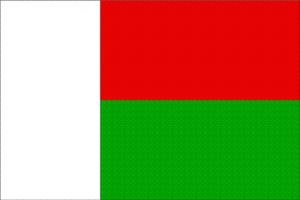Language/Plateau-malagasy/Grammar/How-to-Use-Have
Hi Plateau Malagasy learners! 😊
In this lesson, we will learn how to express "have" in Plateau Malagasy! "Have" is a very important verb that helps you express ownership, possession, and obligations. We hope that by the end of this lesson, you will have a solid understanding of how to use "have" in conversation.
After mastering this lesson, these related pages might interest you: Common Prepositions & Pronouns.
Basic Grammar Rules[edit | edit source]
First, let's look at the basic grammar rules when using "have" in Plateau Malagasy. Plateau Malagasy uses different forms of "have" depending on the subject of the sentence.
Here's an overview of how to use "have" in Plateau Malagasy:
| Plateau Malagasy | Pronunciation | English |
|---|---|---|
| manana | mɑˈnɑnə | have (1st person singular) |
| manan-kazo | mɑnən-kæˈzʊ | have cats (1st person singular) |
| manana-izy | mɑˈnɑnə-iˈzʏ | he/she has (3rd person singular) |
| manankazo izy | mæˈnankæzʊ-iˈzʏ | he/she has cats (3rd person singular) |
Now that we have an overview of how to use "have" in Plateau Malagasy, let's explore each form more in-depth.
"Manana" for 1st person singular[edit | edit source]
"Manana" is the first-person singular form of "have" in Plateau Malagasy. It is used when talking about things that you possess or obligations that you have.
For example:
- Misy ronono aho. (I have rice.)
- Manana asa hiombonana aho. (I have a group project.)
As you can see from the examples, "manana" is used to describe things that the speaker possesses.
"Manan-kazo" for 1st person singular with Direct Object Marker[edit | edit source]
In Plateau Malagasy, the Direct Object Marker (DOM) is "-kazo" when used with living beings such as people and animals. The "-kazo" is used after "manana" to show that the thing being possessed is a living being.
For example:
- Manankazo tena aho. (I have a girlfriend.)
- Manankazo an-tsay aho. (I have a little brother.)
As you can see, "manan-kazo" is used with the DOM "-kazo" when the thing being possessed is a living being.
"Manana-izy" for 3rd person singular[edit | edit source]
"Manana-izy" is the third-person singular form of "have" in Plateau Malagasy. It is used when talking about things that he/she possesses.
For example:
- Manana-izy mpampianatra ny boky. (He/she has a teacher's book.)
- Manana-izy ny vola. (He/she has the money.)
As you can see, "manana-izy" is used when describing things that someone else possesses.
"Manankazo izy" for 3rd person singular with Direct Object Marker[edit | edit source]
Like in the first-person singular, the direct object marker is "-kazo" when used with living beings such as people and animals. The "-kazo" is used after "manana-izy".
For example:
- Manankazo izy ny zaza. (He/she has the kid.)
- Manankazo izy ny biby. (He/she has the animal.)
As you can see, "manankazo-izy" is used with the DOM "-kazo" when the thing being possessed is a living being.
Examples[edit | edit source]
To better understand how to use "have" in Plateau Malagasy, here's a conversation between two people:
- Person 1: Manan-kazo antsika ny alika? (Do we have a cat?)
- Person 2: Tsia, tsy manan-kazo antsika ny alika. (No, we do not have a cat.)
In this example, we can see the use of "manan-kazo" to indicate that the direct object "alika" (cat) is a living being.
Here's another conversation:
- Person 1: Iza no manana ny vola? (Who has the money?)
- Person 2: Manana-izy ny vola. (He/she has the money.)
This conversation shows the use of "manana-izy" to describe that someone else has the money.
Conclusion[edit | edit source]
Congratulations! You have now learned how to use "have" in Plateau Malagasy! Remember, the key to learning a language is practice. Make sure to use what you have learned in conversations and continue to study the Grammar of [Language/Plateau-malagasy|Plateau Malagasy]. And to keep improving, don't hesitate to join Polyglot Club and find native speakers and ask them any questions! 😊
➡ If you have any questions, please ask them in the comments section below.
➡ Feel free to edit this wiki page if you think it can be improved. 😎
Well done on mastering this lesson! Don't miss these related pages to expand your knowledge: Descriptive Adjectives & Alphabet and Pronunciation.

